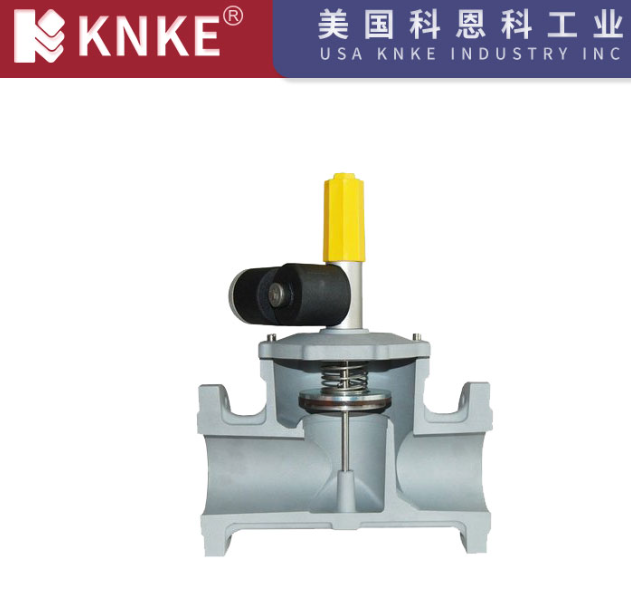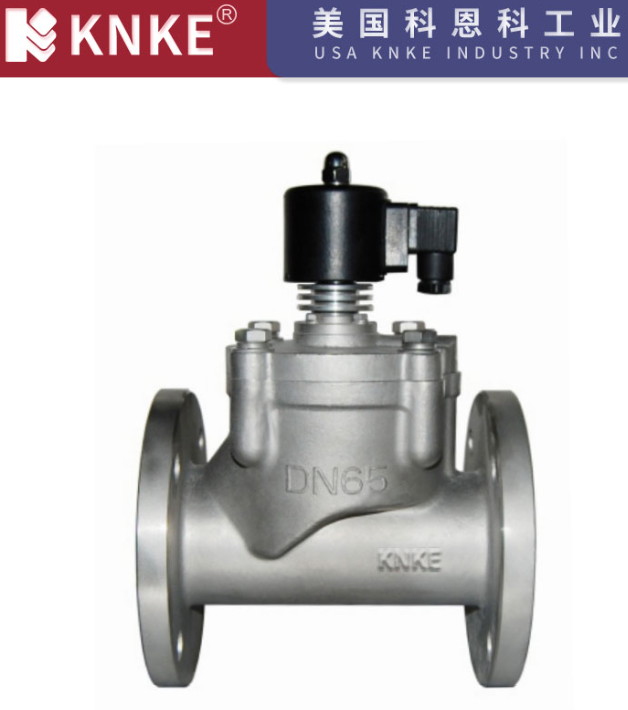The Functions of Solenoid Valves: Key Fluid Control Solutions from Industrial to Domestic Applications
In the rapidly evolving era of industrial automation and smart devices, solenoid valves, as crucial fluid control components, have emerged as the “nerve centers” in various systems, primarily due to their precise electrical control and high – efficiency operation. This article will delve into the core functions, application scenarios, and technological advancements of solenoid valves, thereby providing comprehensive insights for industry professionals and technology enthusiasts.

1. Unveiling the Essence of Solenoid Valves: Electrically – Driven Intelligent Fluid Switches
Solenoid valves are automated devices that control fluid flow based on electromagnetic induction principles. At their core, these valves consist of an electromagnetic coil, a spool, and a valve body. When the coil is energized, the generated electromagnetic force promptly drives the spool to move, effectively opening or closing the fluid passage. Conversely, when de – energized, the spool returns to its original position, thanks to spring force or gravity, thus completing the on – off cycle. This unique “electrical – mechanical – fluid” conversion mechanism makes them a vital link between control systems and actuators.
1.1 Core Technical Advantages
- Millisecond – level Response: Electromagnetic actuation enables solenoid valves to achieve rapid opening and closing. In fact, their response times can be as low as 10 – 50ms, which is extremely crucial for applications requiring quick reactions.
- Precise Control: Through current or voltage control, solenoid valves can linearly adjust flow rate and pressure. As a result, they are highly suitable for scenarios that demand accurate fluid regulation.
- Non – Contact Actuation: By minimizing mechanical wear, non – contact actuation ensures that solenoid valves can have a service life of up to millions of cycles. Therefore, they offer long – term reliability in various operations.
2. Three Core Functions: Transforming Industrial Control Logic
2.1 Intelligent Controllers for Fluid On – Off (Basic Function)
In industrial pipeline systems, solenoid valves serve as “digital valves”. Specifically, they perform the following key tasks:
- On – Off Control: Solenoid valves replace traditional manual valves, allowing for remote operation. For instance, in petrochemical pipelines, they act as emergency shut – off valves, ensuring safety in case of emergencies.
- Safety Protection: Coordinating with sensors, solenoid valves can automatically cut off flow in case of failures. For example, in gas systems, they prevent gas leakage by promptly shutting down when necessary.
- Periodic Control: Working in tandem with PLCs, solenoid valves achieve timed on – off operations. As an illustration, in the dosing pumps of sewage treatment systems, they ensure accurate chemical dosing at regular intervals.
Case in Point: In automotive ABS braking systems, solenoid valves operate at a high frequency of 10 – 15 times per second. Consequently, they precisely regulate the pressure of brake cylinders, effectively preventing wheel lock – up during sudden braking.
2.2 Precise Regulators of Fluid Parameters (Advanced Function)
Thanks to innovative spool designs, solenoid valves can achieve multi – dimensional parameter control:
- Direction Control: Two – position three – way valves, a type of solenoid valve, switch fluid flow directions. Commonly, they are used in hydraulic cylinder reversing systems, enabling smooth operation of the cylinders.
- Flow Regulation: Proportional solenoid valves control the orifice opening linearly based on current signals. With an accuracy of up to ±1% FS, they are ideal for applications that require precise flow measurement and control.
- Pressure Control: When combined with feedback loops, solenoid valves maintain constant pressure output. For example, in air – conditioning systems, they regulate the refrigerant pressure, ensuring the system operates efficiently.
2.3 Nerve Endings of Automation Systems (System – level Value)
As the underlying actuators in Industry 4.0, solenoid valves play a crucial role in completing the “perception – control – execution” loop:
- Remote Control: Solenoid valves can connect to DCS systems via 4 – 20mA signals or Modbus protocols. Thus, operators can control them from a distance, enhancing the flexibility of industrial operations.
- Distributed Control: In smart factories, solenoid valves function as fieldbus nodes, such as PROFINET or EtherCAT. This allows for seamless integration into the overall factory automation network.
- Energy Efficiency: With demand – driven operation, solenoid valves reduce system energy consumption. For example, in the servo – hydraulic systems of injection molding machines, they only consume energy when needed, leading to significant energy savings.
3. Application Landscape: From Heavy Industry to Daily Life

3.1 Key Scenarios in Industrial Automation
Solenoid valves are widely applied in various industrial automation fields:
- Process Industries: In chemical reactors, they control the inlet, ensuring the right amount of reactants enter the system. Additionally, in boilers, they are responsible for safety venting of steam, preventing overpressure.
- Discrete Manufacturing: In automated production lines, solenoid valves actuate pneumatic grippers, enabling the handling of products. Moreover, they control the paint supply for spraying equipment, ensuring even coating.
- Energy Sector: For photovoltaic inverters, solenoid valves regulate coolant circulation, maintaining the optimal operating temperature. Similarly, in wind turbine hydraulic systems, they are used for yaw braking, keeping the turbines facing the wind.
3.2 Critical Applications in Transportation
The transportation industry also benefits greatly from solenoid valves:
- Automotive Industry: Engine variable valve timing (VVT) solenoid valves optimize engine performance by adjusting the valve timing. In addition, automatic transmission shift valves ensure smooth gear changes.
- Rail Transit: In high – speed train braking systems, air valves, a type of solenoid valve, provide reliable braking force. Meanwhile, in subway air – conditioning, refrigerant control valves maintain a comfortable environment.
- New Energy Vehicles: Coolant valves in electric vehicle battery thermal management systems keep the batteries at the right temperature. Also, hydrogen valves in fuel cells regulate the flow of hydrogen, ensuring efficient power generation.
3.3 Invisible Guardians in Domestic Applications
Solenoid valves are also essential in our daily lives:
- Smart Home: In washing machines, water inlet valves control the amount of water entering. Similarly, in water purifiers, flush valves clean the filters regularly. In gas water heaters, proportional valves adjust the gas flow for consistent hot water supply.
- Medical Equipment: In dialysis machines, waste liquid discharge valves remove the used dialysate. In anesthesia machines, gas mixing valves ensure the correct mixture of anesthetic gases, guaranteeing patient safety.
- Environmental Equipment: For home air purifiers, fresh air valves bring in clean air. In garden irrigation systems, intelligent sprinkler valves water the plants precisely, conserving water.
4. Industry Trends: Technological Upgrades Driven by Intelligence
The future of solenoid valves is closely tied to technological advancements:
- IoT Integration: Smart solenoid valves with IO – Link interfaces can enable real – time status monitoring, such as coil temperature and actuation count. As a result, predictive maintenance becomes possible, reducing downtime.
- Material Innovation: Ceramic spools enhance the wear resistance of solenoid valves, increasing their lifespan. Moreover, 3D – printed valve bodies allow for customized designs, meeting specific application requirements.
- Energy Optimization: Low – power designs, with standby current <10mA, and energy – saving coil technologies contribute to reducing energy consumption. Hence, solenoid valves become more environmentally friendly.
- Fault Diagnosis: Built – in Hall sensors in solenoid valves provide spool position feedback, preventing sticking failures. Therefore, the overall reliability of the valves is improved.
From precise industrial control to intelligent domestic applications, solenoid valves are reshaping the fluid control ecosystem with their versatile functions. With the continuous advancement of smart manufacturing, solenoid valves featuring high precision, reliability, and intelligence will undoubtedly become core enabling components for industrial automation upgrades and intelligent consumer devices. Understanding the functions of solenoid valves is not only a technical improvement but also a key step in seizing the opportunities of industrial transformation.
